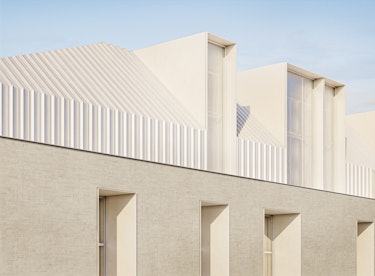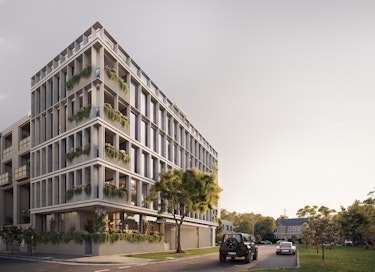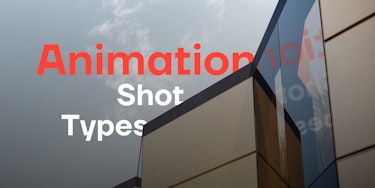Animation, as a storytelling medium, possesses a unique ability to transport viewers to imaginative worlds, elicit powerful emotions, and convey complex narratives. Within the realm of animation, the effective use of shot types holds tremendous potential for maximizing the impact of each frame and elevating the overall viewer experience. Shot types encompass a diverse range of camera angles, distances, and framing techniques that enable animators to shape the storytelling, emphasize emotions, and create a profound connection with the audience.
The strategic implementation of shot types in animation serves as a visual language that enhances the narrative, evokes empathy, and intensifies the emotional engagement. With each shot carefully chosen and thoughtfully composed, animators have the opportunity to captivate audiences by immersing them in the story, emphasizing crucial moments, and conveying the essence of characters and their environments.
This essay delves into the significance of shot types in animation and explores how animators can maximize their impact to create compelling and resonant storytelling experiences. By understanding the nuances and possibilities offered by different shot types, animators can unlock new dimensions in their craft and unlock the full potential of their animated creations.

Throughout the essay, we will examine various shot types and their effects on the viewer. From establishing shots that set the stage and create anticipation, to close-ups that intensify emotional connections, and over-the-shoulder shots that immerse viewers in the character's perspective, we will delve into how each shot type contributes to the storytelling process. Additionally, we will explore the power dynamics conveyed by low-angle and high-angle shots, the fluidity and motion enhanced by tracking shots, and the immersive experience provided by point-of-view shots.
Moreover, we will discuss the factors that animators must consider in order to maximize the impact of shot types. These factors include the alignment of shot types with the story's objectives and emotional beats, the composition and framing techniques employed, the timing and pacing of shots, and the consistent integration of shot types with the animation's overall style and tone. By carefully addressing these elements, animators can effectively harness the potential of shot types to create a visually compelling and emotionally resonant animated narrative.

1. Establishing Shots: Setting the Stage
Establishing shots play a vital role in animation by setting the context, time, and location of the story. By using wide-angle shots, animators can provide a sense of scale and introduce the audience to the world they are about to experience. A well-executed establishing shot not only captivates viewers but also lays the foundation for subsequent scenes, creating anticipation and curiosity.
2. Close-Ups: Emphasizing Emotional Connection
Close-up shots are an effective way to convey emotion and create a strong connection between the viewer and the characters. By focusing on facial expressions, body language, and subtle details, animators can evoke empathy, emphasize key moments, and heighten the emotional impact of a scene. Close-ups are particularly effective in showcasing character development, revealing internal conflicts, and intensifying dramatic sequences.
3. Over-the-Shoulder Shots: Enhancing Perspective
Over-the-shoulder shots provide a perspective from behind a character's shoulder, allowing viewers to see the world through their eyes. This shot type enhances engagement by immersing the audience in the character's point of view, creating a sense of involvement and empathy. Over-the-shoulder shots are effective for action sequences, conversations, and pivotal moments, enabling viewers to experience the events alongside the character.
4. Low-Angle Shots: Conveying Power and Grandeur
Low-angle shots are utilized to depict a character or object from a lower vantage point, creating a sense of power, dominance, or awe. This shot type can be particularly impactful in showcasing larger-than-life characters, intimidating villains, or epic landscapes. By utilizing low-angle shots strategically, animators can emphasize the strength, authority, or significance of certain elements within the narrative.
5. High-Angle Shots: Establishing Vulnerability and Subordination
Contrary to low-angle shots, high-angle shots capture scenes from a higher perspective, looking down on the subjects. This shot type can be used to convey vulnerability, subordination, or a sense of insignificance. Animators can utilize high-angle shots to emphasize a character's struggle, isolation, or to highlight power dynamics within a scene. By carefully employing high-angle shots, animators can evoke specific emotions and enhance the overall impact of the story.
6. Tracking Shots: Enhancing Motion and Fluidity
Tracking shots involve a moving camera that follows a subject, creating a dynamic sense of movement and continuity. Animators can utilize tracking shots to emphasize action sequences, depict chase scenes, or showcase the passage of time. This shot type adds a kinetic energy to the animation, immersing the audience in the flow of the narrative and heightening their engagement.
7. Point-of-View Shots: Encouraging Immersion and Identification
Point-of-view (POV) shots provide a glimpse of the world through a character's eyes, enabling viewers to experience the story from their perspective. This shot type promotes immersion, allowing the audience to identify with the character and forge a deeper emotional connection. By using POV shots strategically, animators can enhance empathy, engage the viewer, and create a more immersive storytelling experience.
In conclusion, shot types are invaluable tools in maximizing the impact of animation. By strategically selecting and implementing shot types, animators can enhance storytelling, evoke emotions, and captivate the audience. Establishing shots provide context and build anticipation, close-ups emphasize emotional connections, and over-the-shoulder shots immerse viewers in the character's perspective. Low-angle and high-angle shots convey power dynamics, while tracking shots enhance motion and fluidity. Point-of-view shots promote immersion and identification. Animators should consider the story's objectives, shot composition, timing, pacing, and overall style to effectively leverage shot types. With advancing technology, animators now have a broader range of tools at their disposal, allowing for more intricate and impactful implementation of shot types. By harnessing the power of shot types, animators can create animation that resonates with audiences, leaving a lasting impact and fostering a deeper appreciation for the art form.
